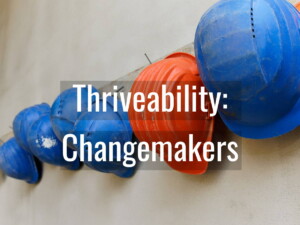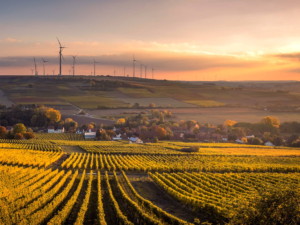Smart clusters: How tourism destinations can organise for a better future

How can travel & tourism stakeholders work and play better together within destinations to ensure optimal outcomes?
K Michael Haywood suggests clustering.
It’s a “Good Tourism” Insight.
[You too can write a “GT” Insight.]
There is strong evidence linking positive business performance and outcomes with societal outcomes and life-affirming values.
Nevertheless, many tourism enterprises remain ignorant, baffled, or disinterested.
Or perhaps their leaders feel that their organisations are too small, or they themselves are too busy managing the day-to-day operations, to make a difference.
What are we collectively neglecting to do to help them?
Despite the efforts by many NGOs and industry associations to highlight and address the myriad of current crises, what remains half-hearted is an essential push to re-invent the tourism industry community-by-community, destination-by-destination.
Also see K Michael Haywood’s first “GT” Insight
“Can destinations-as-communities be better & smarter by design?”
Certainly turnkey solutions are lacking. But more troubling is the distant and disconnected leadership operating from positions at the top of traditional hierarchies rather than from within and among stakeholder groups.
This might account for the lack of well-developed eco-systems for innovation within the travel & tourism industry, its various interdependent yet operationally independent sectors, and virtually all host communities or communities-as-destinations.
The practical potentialities of tourism industry clusters
Travel & tourism cannot afford to remain a highly fragmented industry.
Tourism’s practical potentialities (some identified in my previous post) can be brought to fruition by applying the cluster concept to tourism. When well-executed, industry clusters can bring different stakeholders together. And they can highlight the essential need for complementary relationships that bolster interdependencies and help us regain the ‘unity’ inherent in community.
Also see Phoebe Everingham’s “GT” Insight
“Tourism’s ‘critical’ rethink and its imperative shift to circular economics”
In many communities-as-destinations, travel & tourism is perceived as a composite of ecosystems; rarely as a cluster.
This might change if leaders took to heart the findings of the UNWTO report on City Tourism, and delved into OECD’s support for innovation in tourism. These remind us that travel & tourism clusters aren’t simply economic constructs to be judged on competitiveness, but on their aggregate contributions to the overall rejuvenation of the human spirit and social, cultural, economic, and natural capital.
By engaging in cluster development, communities-as-destinations can enhance their productive growth (while avoiding Ponzi schemes). Moreover, it is far more likely that they will coalesce around more magnanimous “synergistic” forms of value that embrace all aspects of human, economic, social, and cultural development.
Of course, most visitor-serving enterprises try to excel at providing “functional” and “convenience” value. However, by working collaboratively in a cluster, they can do more to ensure that every business, household, and citizen in a place can, in some way, becomes a provider of the emotional, social, and life-affirming value that travel & tourism can bring to communities and visitors.
Also see Bjørn Z Ekelund’s “GT” Insight
“In the eye of the beholder: How to create valuable tourism experiences”
The same goes for government agencies, NGOs, and all sorts of cultural and social enterprises through their attempts to add to the social, cultural, and intellectual prowess of communities. Far more could be shared if everyone acknowledged their role in contributing to the prosperity agenda and worked in closer partnership to realise the net benefits and “high value” multipliers of travel & tourism.
Travel & tourism clusters are potential magnets for other industries and for great economic vitality. This being the case, most communities-as-destinations could do far more to create “gateway” value for new business and community activity; spurring inbound and outbound connectivity through the development of roads, ports, and airports (though questionable at times).

In less tangible ways too, clusters encourage the establishment of many types of businesses; foster other forms of trade; strengthen foreign policy through cultural diplomacy; and, enhance the viability of shopping and creativity districts and sports and cultural centres.
Given its economic muscle and its labour-intensiveness, travel & tourism is a major employer; providing wide-ranging opportunities for people with a variety of skill sets, and of all ages, educational backgrounds, and language and cultural fluencies.
Through travel & tourism employment, more people are likely to be lifted out of poverty and social deprivation. However, with the anticipated future of work sapping the willingness of some to be in service to others, it is vital that we’re prepared to do more to improve employment conditions.
Also see Andrew Chan’s “GT” Insight
“Data analytics, financial acumen are keys to a career in travel & tourism”
In comparison to many other industries, travel & tourism clusters excel when civic or community-mindedness is prominent. They are at their best when they embrace locals and that which is local.
No doubt the identity of communities could be better differentiated if tourism clusters worked harder to achieve more authentic place-making.
For example, they could invest in local enterprises, cultural institutions, festivals, and events. In some cases, the local can achieve national and even global recognition due to its contextually-significant cultural and entertainment value. In the process, a community’s quality-of-life can be enhanced and its heritage and cultures protected.
In a similar vein, travel & tourism can serve to strengthen relationships and deepen our sense of community:
- Communities: Where the heart is.
- Communities that demonstrate compassion.
- Communities that help foster new restoration stories.
- Communities experimenting with new forms of development economics.
- Communities that commit to sustainability and regenerative urban planning.
As a well-functioning cluster, travel & tourism can provide opportunities to create transformational and transcendent (experiential, life-enhancing, and social) value that is humanely, emotionally, and sensually resplendent.
All of this, and more, can be accomplished through the loving design, stewardship, and presentation of places and spaces that encourage human visitation, engagement, and participatory involvement (with caution, given tourism’s invisible burdens).
Also see Kristin Dunne’s “GT” Insight
“Planning tourism with purpose & love in New Zealand’s Bay of Plenty”
Add to this tourism’s potential for fostering curiosity and exploration among different target markets and lifestyles, and what you get is an industry that deserves to be even more advanced in its progressiveness. This can be so if tourism clusters act as “weavers”, fostering in others a sense of joy and goodwill.
With hospitality as part of its raison d’être, travel & tourism holds untold promise as the most face-to-face, down-to-earth, and grass-rooted of industry clusters, in tune and convergent with:
- The host/guest relationships, fully aware of the complementary nature of each other’s activities, and many engaged in active partnerships.
- Imaginative and innovative collaboration that creates functional, emotional, social and life-enhancing value (and contributes to the gift economy).
All of this can occur if we are determined, even when hamstrung by challenges to the safety of visitors, especially in emergencies or when visitors “Come from Away”.
Certainly travel & tourism can overwhelm natural, human, cultural, and financial capital in ways few other industries can. In doing so, though, it is essential that its wealth (wellth) creation prowess be for the benefit of the entire community; a somewhat obstinate task all industry clusters should be giving thought to, particularly if they focus on becoming regenerative.
Also see Tazim Jamal’s “GT” Insight
“Towards a new paradigm for regenerative tourism and just futures”
Certainly travel & tourism clusters within communities-as-destinations will have to work harder if they are to muster the wherewithal to perfect their cluster initiatives. It might be simplistic to re-state this but it begins with the human touch, listening, and taking time to understand other perspectives before promoting our own.
Such an approach provides a pathway for stakeholders to share their aspirations for their communities while paying attention to inflection points — such as prolonged climate, energy, and health crises, and restrictions on movement — that may signal the need for continuous adaptation and wholesome and inspirational ideas.
One can’t expect to bring about any of these forms of transformation without conferring legitimacy onto leadership. This demands addressing (what might be a lack of) the required qualities of leadership.
Also needed is empowering employees; helping small to medium-sized enterprises become smarter; learning to be smarter as intelligent communities; and, determining the need for innovation hubs — such as in Queensland, Australia and Ontario, Canada — that foster bottom-up innovation.
When conceived as a supportive and connective industry cluster with the potential to power whole communities forward, a very strong business case can be made for travel & tourism as a super-cluster. But how, when individualised rights-to-freedom (exaggerated during these COVID times) keep pulling us apart rather than together?
Progressing toward potentialities
Certainly a few well-intentioned communities are taking it upon themselves to reorient tourism to enhance local well-being. But is this sufficient?
As a cluster, most communities-as-destinations and their travel & tourism industries would progress faster if they delved into their collective past to fully assess the development, marketing, and rhetoric of tourism. This would include an honest assessment of the operations of visitor-serving enterprises and their economic, social, cultural, and environmental missions, ministrations, and missteps.
As a shared learning journey, such reflection on past successes and shortcomings and determination of “what currently is”, can lead to some amazing insights. Moreover, by adopting favoured forms of peer learning everyone would be far better positioned to delve deeper into re-thinking the purpose of tourism (not just visitor-serving organisations), and to consider “what could and should be” in a thoughtful re-framing and repositioning of a community-as-destination.
With the central notion that successful clusters bring people together, aspirational futures can be pursued with confidence by organisations within clusters, and individuals within organisations, in the knowledge that the outcome-driven innovations or initiatives (ODIs) they identify are acceptable within the context of their communities.
What do you think? Share a short anecdote or comment below. Or write a deeper “GT” Insight. The “Good Tourism” Blog welcomes diversity of opinion and perspective about travel & tourism because travel & tourism is everyone’s business.
Featured image (top of post): Our Milky Way is a cluster of stars that includes ours. Image by Greg Rakozy (CC0) via Unsplash.
About the author

K Michael Haywood is Professor Emeritus, School of Hospitality, Food and Tourism at the University of Guelph in Ontario, Canada. Prof Haywood has recently written an e‑book “Astonish, Smarter Tourism by Design”. Find Michael on LinkedIn.





